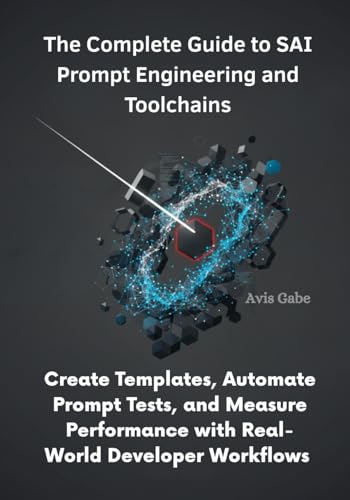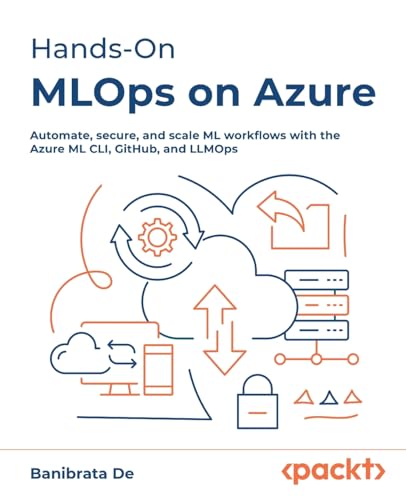Want to turn AI knowledge into a paid consulting practice? Great — this guide walks you through the whole journey, step-by-step. Each step adds a clear purpose and gives concrete actions, deliverables, and examples you can copy-paste. No fluff — only practical moves you can take right now.
Introduction — why people hire AI consultants
Businesses hire AI consultants to (1) turn vague AI ideas into working solutions, (2) reduce risk and cost of experimentation, and (3) align AI projects with business outcomes (more revenue, lower costs, faster decision making). As a consultant you become the bridge between AI tech and business value.
Deliverable from this guide: a repeatable roadmap to launch, land, and scale AI consulting services.

10% discount COUPON
[copy_inline text=”DOER”]

COUPON
[copy_inline text=”NNN12″]
Core value proposition (what you sell)
Add: Clarity & impact.
Give: A one-line pitch you can use in outreach:
“I help [industry] companies find, build, and deploy AI use-cases that increase [revenue / efficiency / retention], starting with a low-risk proof-of-concept and ending with an operational solution.”
Use this for your website and cold emails.

Wego Flights & Hotels

Wego Flights

Wego Hotels
Step 1 — Build a practical AI skillset (not just theory)
Add: Credibility.
Give: Concrete topics and exercises.
- Technical fundamentals: machine learning concepts, model evaluation, data prep, prompt engineering, and MLOps basics.
- Action: Complete at least three hands-on projects (examples below).
- Deliverable: GitHub repo with code, README, and short demo video (1–3 mins).
- Business fundamentals: ROI calculations, stakeholder interviews, KPIs, cost estimates (compute, data, engineering).
- Action: Practice writing 2–3 one-page ROI analyses for sample use-cases.
Example mini-projects (copyable):
- Sales lead scoring: public dataset → model → dashboard screenshot + 1-paragraph business outcome.
- Customer support automation: prototype a retrieval-augmented chatbot + sample intents & fallback logic.
- Document processing: OCR → structured data extractor → Excel/CSV output.
Step 2 — Choose (and narrow) your niche
Add: Faster trust & easier sales.
Give: How to pick a niche and 5 sample niches.
- Pick industry (e.g., healthcare, real estate, fintech) + function (sales, ops, HR, legal).
- Action: List three target industries you have domain familiarity with. For each, list 3 pain points AI can help with.
Sample niches: Retail inventory forecasting, legal contract automation, real-estate photo enhancement & copy generation, fintech fraud detection, HR candidate screening.
Deliverable: A one-page “niche brief” that outlines top 3 use-cases and ROI logic for that niche.
Step 3 — Create a productized service offering
Add: Easier selling + simpler pricing.
Give: 3 productized offers you can list on a website.
- Use-Case Discovery Sprint
- What you give: Stakeholder interviews, data audit, prioritized roadmap (top 3 use-cases), and high-level ROI.
- Deliverable: 1-page prioritized roadmap + slide deck.
- Proof-of-Concept (PoC)
- What you give: Prototype model or automation that demonstrates value with sample data + evaluation.
- Deliverable: Working demo, code repo, evaluation report, next-steps list.
- Pilot → Production Package
- What you give: Productionization plan, MLOps checklist, cost estimates and handover training.
- Deliverable: Deployment scripts, runbook, training session recording, SLA suggestions.
Tip: Use fixed-scope scopes and fixed-price proposals for these packages to reduce negotiation friction.
Step 4 — Build a minimum-viable portfolio & case studies
Add: Social proof.
Give: Exact elements to include and templates.
- Elements: Problem statement, approach, key metrics (before & after), screenshots/demos, client quote (real or anonymized).
- Action: Create 2–3 case studies (can be personal projects or pro-bono client work).
- Deliverable template (one paragraph you can adapt):
Problem: Company X had manual invoice processing taking N hours/week.
Solution: Built an automated document pipeline using OCR + rules + small model to extract fields.
Result: Reduced manual effort by X% and cut processing time by Y; projected cost saving $Z/year.
Step 5 — Go-to-market: outreach that works
Add: Clients.
Give: Outreach templates and channel strategy.
- Channels: LinkedIn (posts & DMs), targeted cold email, partnerships (agencies / dev shops), speaking at niche events.
- Action: Prepare 3 LinkedIn posts that showcase a mini case study, a short video demo, and a lesson learned.
- Cold email template (short):
Subject: Short idea to reduce [pain point] at [Company]
Hi [Name], I help [industry] teams reduce [pain] by [how]. I’d love 15 minutes to share a quick idea I think would save your team [outcome]. Are you free this week? — [Your name, 1-line credential, calendar link]
- Deliverable: A tracked spreadsheet of outreach with status tags (contacted, interested, meeting, proposal sent).

Lenovo India

SentryPC

Matrinic Audio
Step 6 — Run discovery meetings that convert
Add: Faster alignment.
Give: A meeting agenda and checklist.
Discovery meeting agenda (copyable):
- 5min — Introductions & outcomes for the call
- 10min — Current challenges & impact (ask for metrics)
- 10min — Data availability & tech stack (what’s in place?)
- 10min — Quick feasibility reaction & suggested next step
- 5min — Wrap with proposed follow-up (Discovery Sprint or PoC)
Checklist: Ask about KPIs, decision owners, data sources/formats, security/regulatory concerns, existing vendor contracts.
Deliverable: One-page findings summary + recommended next-step: “Discovery Sprint” or “PoC.”
📘 Click here to download your 💰 Ultimate Generative AI Workbook
Step 7 — Deliver high-impact proofs quickly
Add: Credibility + momentum.
Give: A delivery checklist and quality standards.
- PoC checklist: reproducible code, sample data, evaluation metrics, model limitations, risks, recommended production architecture.
- Quality standards: document assumptions, version control, unit/integration tests for data pipeline, simple cost model (compute + storage + maintenance).
Deliverable: Demo script + 5-min recorded walkthrough you can share with stakeholders.
Step 8 — Pricing & contracts (practical)
Add: Predictability & professionalization.
Give: Pricing approaches & contract items to include.
- Pricing models: fixed-price for discovery/PoC, monthly retainer for advisory, fixed-price + success fee for outcome-based projects, or time & materials for long engagements.
- Contract essentials: scope, deliverables, acceptance criteria, IP & data ownership, payment milestones, termination, confidentiality.
- Action: Prepare two contract templates — one for fixed-scope PoC and one for advisory retainer.
Deliverable: One-page “Statement of Work” template you can reuse.
Step 9 — Handover, training & support
Add: Longevity & upsells.
Give: Handover pack contents.
- Handover pack: code repo link, deployment steps, runbook, monitoring metrics, rollback plan, user guides, training recording.
- Offer a 30-day support window or retainer for maintenance and monitoring.
Deliverable: Handover checklist.
Step 10 — Scale your practice
Add: More revenue without burning out.
Give: Practical scaling moves.
- Productize repeatable components (e.g., a data ingestion module, template prompts).
- Hire/partner with engineers or junior consultants.
- Offer training workshops and licensed playbooks to clients.
- Build partnerships with agencies or tools to become a preferred integrator.
Deliverable: A one-page “scale plan” listing three repeatable products you can sell.
Sales & delivery hygiene (daily/weekly checklist)
Add: Reliability.
Give: Copyable checklist.
- Weekly: outreach follow-ups, publish one LinkedIn insight, update pipeline.
- On every client: maintain a single shared doc with status, risks, actions, and next meeting date.
- After every engagement: request a testimonial and a case study.
Tools & tech stack (starter list)
Add: A practical toolkit.
Give: Categories + examples you can adopt.
- Modeling & prototyping: Python (pandas, scikit-learn), Jupyter, LangChain (prompts & RAG), Hugging Face.
- MLOps & deployment: Docker, CI/CD, AWS/GCP/Azure basics, monitoring with Grafana/Prometheus or simple dashboards.
- Collaboration & demos: Notion or Google Docs for notes; Streamlit or simple web UI for demos; Loom for walkthroughs.
- Data: basic ETL tools, CSV/Parquet handling, simple SQL.
Deliverable: A one-page “tech preference” you can share with prospects.
Client conversation cheatsheet (what to say)
Add: Confidence in sales calls.
Give: 6 short phrases to use in calls.
- “What metric would make this project a success for you?”
- “Who will be the final decision maker for this project?”
- “Tell me about the data — where is it stored and who owns it?”
- “A low-risk way to validate this is a small PoC that demonstrates X.”
- “Here are the likely risks and our mitigation steps.”
- “If this works, our next step would be productionization and a monitoring plan.”
Sample 1-page proposal outline (copyable)
Add: Faster proposals.
Give: Outline you can paste into email or Slides.
- Title & client summary
- Problem & impact (1–2 lines)
- Proposed scope (Discovery / PoC / Pilot) — bullet list
- Deliverables (exact items)
- Acceptance criteria
- Pricing & payment schedule
- Timeline & milestones (avoid absolute dates — use milestone order)
- Next steps & CTA
Common objections and short responses
Add: Ability to handle pushback.
Give: 5 objections + sample replies.
- “We don’t have clean data.” → “We’ll start with a data audit and small sample to show feasibility; often value appears even with imperfect data.”
- “Too expensive.” → “A small PoC lets you validate the idea before larger budget commitments.”
- “We tried AI before and it failed.” → “What failed was usually unclear success metrics or lack of ownership — we design for measurable outcomes and clear handover.”
- “We need compliance.” → “We’ll document all data flows and recommend controls; we can work with your legal/compliance team.”
- “How do we measure ROI?” → “We’ll define 1–3 KPIs up front and produce an ROI model as part of the discovery.”
First deliverables to create (copy-and-paste tasks)
Add: Momentum to get started.
Give: 6 immediate items you can produce right now.
- One-line pitch & niche brief.
- GitHub repo with 1 mini-project + README + demo video.
- One productized service page (Discovery Sprint).
- Cold outreach email & LinkedIn post.
- One-page case study (real or pro-bono).
- Proposal and SOW templates.
Final tips — how to think about winning
- Start small and show measurable outcomes.
- Focus on one niche until you have repeatable success.
- Be the translator between business and engineers. Clients pay for clarity, not technical complexity.
- Package and reuse work — productization is the fastest route to scale.
📘 Click here to download your 💰 Ultimate Generative AI Workbook
Like what you see? Tip DoerDigitalz and fuel the creation of more high-quality digital content.
☕ Buy Me a Coffee* This article contains affiliate links; if you click such a link and make a purchase, Doer Digitalz FZE may earn a commission.







































